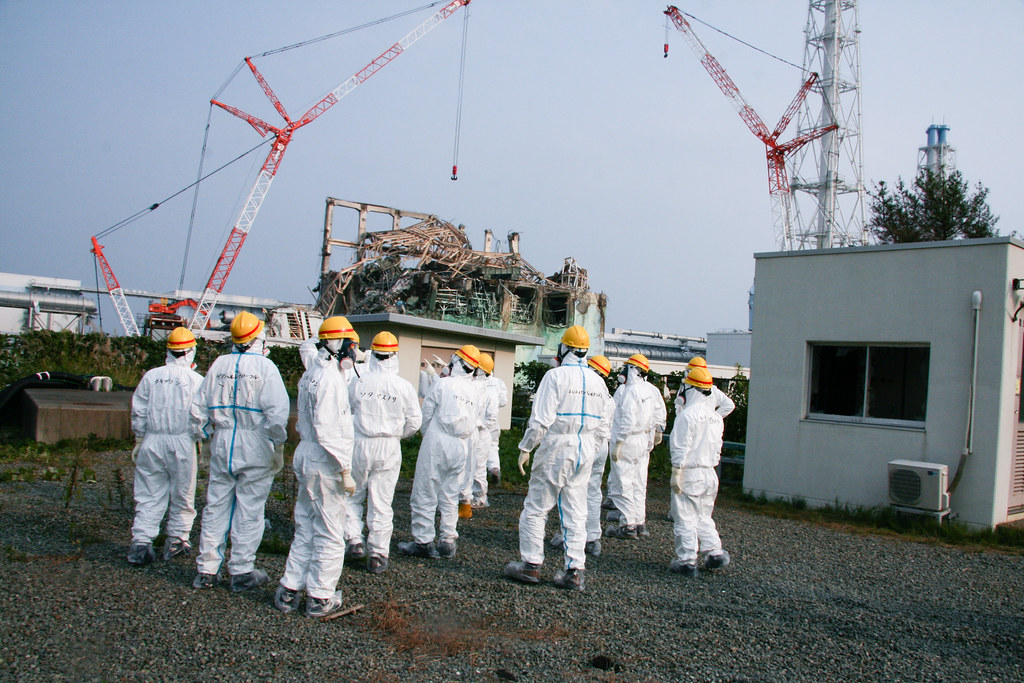IAEA Reaffirms Japan’s Safe Discharge of ALPS Treated Water from Fukushima
The visit was part of the IAEA’s long-term independent review that started in 2021 to evaluate the safety, transparency, and monitoring of Japan’s discharge of ALPS treated water into the Pacific Ocean.

The International Atomic Energy Agency (IAEA) has reaffirmed that Japan continues to adhere to international safety standards in its ongoing discharge of Advanced Liquid Processing System (ALPS) treated water from the Fukushima Daiichi Nuclear Power Station (FDNPS). This conclusion follows a recent five-day mission by the IAEA Task Force, which conducted its fourth review in Japan since the discharge began on 24 August 2023.
From 26 to 30 May 2025, the IAEA Task Force held a series of technical meetings and site inspections involving officials from the Japanese government, local authorities, and Tokyo Electric Power Company (TEPCO), the operator of the Fukushima plant. The visit was part of the IAEA’s long-term independent review that started in 2021 to evaluate the safety, transparency, and monitoring of Japan’s discharge of ALPS treated water into the Pacific Ocean.
Focus on Monitoring, Verification, and Transparency
The scope of the Task Force's fourth mission focused specifically on assessing Japan’s comprehensive radiation monitoring programs, data accuracy, and ongoing compliance with IAEA safety standards. Their evaluation included:
-
Radionuclide Monitoring: Assessment of ALPS treated water stored in tanks, diluted water prior to and during discharge, and radiation levels in the surrounding marine environment.
-
Equipment Inspection: Onsite examination of radiation monitors, flow rate detectors, and other technical infrastructure supporting the discharge.
-
Independent Sampling and Corroborative Monitoring: Review of the IAEA’s own sampling and data verification processes to ensure Japanese laboratories, including TEPCO’s, maintain accuracy and consistency.
Gustavo Caruso, Chair of the IAEA Task Force, emphasized the value of international oversight in maintaining public confidence and transparency:
“As a result of our assessment this week, the Task Force can again confirm that Japan’s ongoing monitoring of the ALPS treated water discharge complies with international safety standards,” he said.
ALPS Water Discharge: A Long-Term, Monitored Process
The ALPS treated water discharge involves processing contaminated water to remove most radionuclides, except tritium, which is then significantly diluted before being released into the ocean. According to Japan's operational protocols, tritium concentrations must remain well below national regulatory limits — a requirement that has consistently been met.
Since July 2023, when IAEA Director General Rafael Mariano Grossi inaugurated an onsite IAEA office at the FDNPS, the Agency has conducted real-time analysis of each batch of discharged water. All 12 releases to date have shown tritium concentrations far below Japan’s operational limits. Live radiation and flow rate data are also publicly accessible on the IAEA’s real-time monitoring platform, reinforcing transparency and public access to information.
International Collaboration and Oversight
The Task Force is comprised of both IAEA staff and 11 independent international experts from countries including Argentina, Australia, Canada, China, France, the Marshall Islands, Republic of Korea, Russian Federation, United Kingdom, United States, and Viet Nam. This diverse panel ensures that safety assessments benefit from a wide range of technical expertise and international perspectives.
Over the course of this latest mission, the Task Force engaged with numerous Japanese agencies including:
-
TEPCO (plant operator)
-
Nuclear Regulation Authority
-
Ministry of Foreign Affairs
-
Ministry of Economy, Trade and Industry
-
Ministry of Environment
-
Fisheries Agency of Japan
-
Fukushima Prefectural Government
Their discussions focused on regulatory oversight, environmental protection, stakeholder communication, and the implementation of “ALPS Additional Measures” — a framework designed to enhance international participation and expand the transparency of Japan’s decommissioning process.
IAEA Laboratory and Cross-Verification
The IAEA has also conducted interlaboratory comparisons to assess the proficiency of Japanese laboratories involved in radiation monitoring. These comparisons are crucial in validating the accuracy of results provided by Japanese agencies. The IAEA’s onsite lab continues to cross-check results and conducts its own analysis of water samples from various discharge phases.
In addition to the ALPS treated water discharge, the Agency also supports Japan in promoting public understanding and acceptance through educational initiatives, data sharing, and technical dialogue with global stakeholders.
Next Steps and Public Reporting
This ninth mission by the Task Force is part of the IAEA’s multi-year commitment to support and independently verify Japan’s actions through at least 2027. The findings from this latest mission will be compiled in a report scheduled for public release later this year. Reports from the first three post-discharge review missions are already accessible online.
By upholding scientific rigor, fostering international collaboration, and ensuring transparency at every step, the IAEA and Japan aim to maintain global trust in the safe handling of post-accident nuclear materials and environmental stewardship in Fukushima.
- READ MORE ON:
- Fukushima recovery
- IAEA radiation safety
- nuclear education
- environmental remediation
- Japan nuclear accident
- student engagement
- radioactive waste management
- international cooperation
- post-disaster recovery
- radiation monitoring
- Fukushima Daiichi
- IAEA Task Force
- ALPS treated water
- radiation safety
- Japan nuclear discharge
- TEPCO
- international safety standards
- environmental monitoring
- radioactive water management
- nuclear decommissioning










